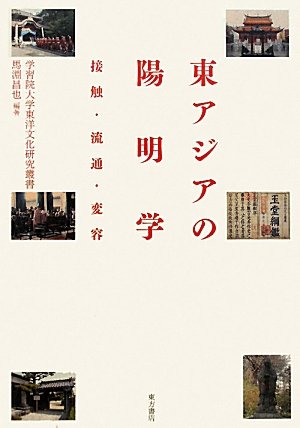2 0 0 0 OA 宋明期儒学における静坐の役割及び三教合一思想の興起について
- 著者
- 馬淵 昌也
- 雑誌
- 言語 文化 社会 (ISSN:13479105)
- 巻号頁・発行日
- no.10, pp.87-117, 2012-03-31
In this paper I discuss some aspects of Neo-Confucian attitudes towards quiet-sitting practice during the Song(宋), Yuan(元) and Ming(明) dynasties (approximately 11C-17C ). During this period Confucians shared one presupposition about human nature(性), namely that the substance of human nature is perfectly good, and is equal to the substance of the heaven(天), the heavenly principle (理). Confucians thought that humans could become sages by embodying the heavenly principle, which exists in the deepest layer of the human mind, by eliminating the obstacles which hamper human nature from revealing itself on the surface of mind in a perfect way. We can find quite a few examples of the Confucian effort to become a sage by fully realizing oneʼs nature through performing certain kinds of mental training, and quiet sitting was seen as one of the most effective methods of enabling one to directly touch the human nature that lies at the bottom of oneʼ s mind. Therefore we should say that Confucian scholars during this era esteemed the value of quiet-sitting as a useful mental practice to attain sagehood. However, to pursue the substance of human nature through practicing quietsitting had another, perilous, side, and some Confucians were forced to stay very cautious about fully indulging in it. In fact, penetrating into the deeper sphere of human mind to pursue the substance of human nature often led scholars to believe that the crucial substance of human nature is a tranquil spiritual essence which does not have any articulate clues or traces, and that Confucian social ethical norms such as benevolence and righteousness(仁義) are only some superficial expressions of that amorphous substance. Some scholars even dared to say that the more accurate descriptions of the real state of human nature which lies in the deeper sphere of human mind are given in Buddhist or Daoist texts rather than the Confucian classics. Here we can discern a strong possibility that such scholars would have a so-called “three teachings in one ”(三 教合一) theory, and the theoretical value of Buddhism and Daoism, which traditionally claimed that the substance of human nature does not have any describable trait and can be referred to only by negative words such as nothing (無) or emptiness(空), might be evaluated more highly by those people than that of Confucianism, which inclined to emphasize the indispensable value of concrete ethical rules in everyday life. There was a long history of disputes around these attractive but dangerous characteristics of quiet-sitting practice among Neo-Confucian scholars from the Song through the Ming periods. In this paper I pick up and analyze some representative cases of distinctive Confucian scholars such as ZhuXi(朱熹 1130-1200), WangYangming(王陽明1472-1528), XueHui(薛蕙1489-1541), GaoPanlong(高攀龍1562-1626) and LuLongqi(陸隴其1630-1692) as the most suggestive examples of Neo-Confucian attitudes towards quiet-sitting practice, and show how Confucian scholars were deeply engaged in that practice in ambivalent and complicated ways. At the same time, I discuss an important historical phenomenon which appeared in the late Ming period, whereby Confucians, who had not had a fully manifest manual for quiet-sitting practice until then, even though many scholars had been practicing it since the Song dynasty, began to make up brief, simple and explicitly described pamphlets for quiet-sitting, and in that trend the first pure Confucian quiet-sitting training manual was also introduced in the long history of the Chinese Confucianism.
1 0 0 0 東アジアの陽明学 : 接触・流通・変容
1 0 0 0 劉宗周から陳確へ--宋明理學から清代儒教への轉換の一樣相
- 著者
- 馬淵 昌也
- 出版者
- 日本中国学会
- 雑誌
- 日本中国学会報 (ISSN:03873196)
- 巻号頁・発行日
- vol.53, pp.195-212, 2001
